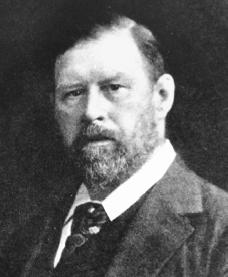The Longman Anthology highlights several themes of the Victorian era. Two of these themes, modernity and religion, are highlighted and called into question in Dracula, reflecting Stoker’s doubts in regards to the Industrial Revolution, the subsequent urbanization of the city, and the crisis of faith that occurred in Victorian England, which is also addressed in Dracula.
Signs of modernity are juxtaposed by those of the old-world at every turn in Dracula. The Longman Anthology says that “the ‘newness’ of Victorian society—its speed, progress, and triumphant ingenuity—was epitomized by the coming of the railway.” Dracula essentially lives in gothic times; it requires a coach and carriage to reach his home. However, the further and further one travels from Transylvania and the closer one gets to London, the more modernized transportation becomes. Transylvania is also where Harker comes across people who don’t follow “modern” religion. The Longman Anthology discusses the clash of different sects and variations of Christianity, but more importantly that modern scientific discoveries cause a crisis of faith.
Harker states that he is an Anglican, dismissing the beliefs of the innkeeper and other village people in Transylvania as an old-world religion—superstition not yet updated according to Darwin or other recent discoveries. However, Stoker proves that Harker’s way might not be the only way. For example, the villagers seem to know a truth that Harker, his mind limited to things he can understand through science, does not have access to. Despite Harker’s dismissive attitude towards the act of the innkeeper’s wife putting a crucifix around his neck, the power of the crucifix is later verified which, in turn, begins to validate some beliefs of old religion. This is further confirmed by Van Helsing’s method of care for Lucy, which requires a marriage of western and non-western practices to protect Lucy from whatever is hurting her. While he does use the very modern technique of blood transfusions to restore her several times, he also covers her in garlic flowers based off of the superstition that garlic wards off vampires, and this succeeds in deterring Dracula on several occasions.
In his use of both modern beliefs and old beliefs, Stoker shows that he is necessarily condemning modern religion in favor of ancient religion, or vice versa. He is simply suggesting that the people of Victorian England, who are so set on thoughts of advancement and the new, might do well to avoid complete desertion of the old

 on beauty is placed only on his women, as he describes Count Dracula with animalistic features: “his ears were pale and at the tops extremely pointed; the chin was broad and strong, and the cheeks firm though thin….The backs of his hands…were rather coarse —broad, with squat fingers. Strange to say, there were hairs in the centre of the palm” (25). Pop culture’s vampires, however, are all rendered beautiful no matter their gender. Vampires are thought to be sexy (women AND men, now) and Interview with the Vampire corroborates that. In fact, how would that change Stoker’s Count Dracula if he had described him less beastly? Would it take away the sense of horror? Or does the idea of a beautiful seductive vampire give an even more horrific tone, since they look more like us?
on beauty is placed only on his women, as he describes Count Dracula with animalistic features: “his ears were pale and at the tops extremely pointed; the chin was broad and strong, and the cheeks firm though thin….The backs of his hands…were rather coarse —broad, with squat fingers. Strange to say, there were hairs in the centre of the palm” (25). Pop culture’s vampires, however, are all rendered beautiful no matter their gender. Vampires are thought to be sexy (women AND men, now) and Interview with the Vampire corroborates that. In fact, how would that change Stoker’s Count Dracula if he had described him less beastly? Would it take away the sense of horror? Or does the idea of a beautiful seductive vampire give an even more horrific tone, since they look more like us?

